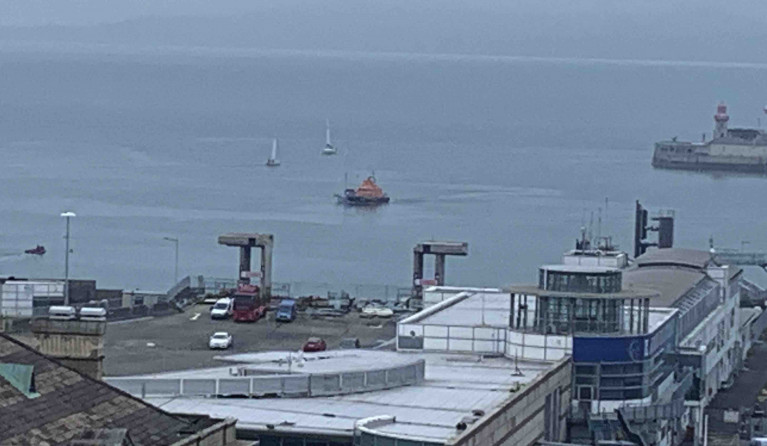Dun Laoghaire RNLI launched both their lifeboat’s this afternoon (Tuesday 11 August) at the request of the Irish Coast Guard assisting two vessels in two separate incidents.
At 12:55 pm today, the all-weather lifeboat was launched under Coxswain Mark McGibney with a crew to reports of a yacht which had suffered steering failure two miles north of Greystones in County Wicklow. A local vessel, ‘Centurion’, sighted and confirmed the casualty vessel’s location. The volunteer crew made their way to the scene arriving at 1:21 pm and on arrival, the lifeboat crew assessed the situation. The person on board was in good health and the stricken yacht was taken in tow to Dun Laoghaire Harbour.
As the all-weather lifeboat was on its way back to Dun Laoghaire Harbour the station’s inshore lifeboat was also requested to launch at 2:06 pm to a separate incident just outside the entrance to Dun Laoghaire Harbour. A report was received from the Irish Coast Guard of five people on a 23ft yacht with engine failure. The inshore lifeboat crew swiftly located the vessel arriving on scene at 2:14 pm, having assessed that all on board were in good health the volunteer crew took the yacht in tow bringing it into Dun Laoghaire Harbour arriving at 2:45 pm. The station’s all-weather lifeboat crew arriving after shortly after, at 3:00 pm.
Weather conditions at the time of both callouts were described as calm with a light wind with restricted visibility due to fog.
 Dun Laoghaire Harbour RNLI Coxswain Mark McGibney
Dun Laoghaire Harbour RNLI Coxswain Mark McGibney
Speaking following the call out, Mark McGibney, Dun Laoghaire RNLI lifeboat Coxswain said: ‘The people in both incidents made the right decision in calling the Irish Coast Guard for help. Conditions today were calm on scene but visibility was restricted by fog, thank you to the crew of the local vessel, Centurion for sighting and confirming the vessel’s location which allowed us to respond with no delay’.
Also speaking alongside Mark McGibney following the callouts was Gary Hayes, Dun Laoghaire RNLI inshore lifeboat Helm, he said’ The volunteer crew and I are very happy to have returned everyone safely to shore today. I’d like to take this opportunity to ask everybody thinking of going out on the water to please check their vessel and safety equipment in advance’.































































